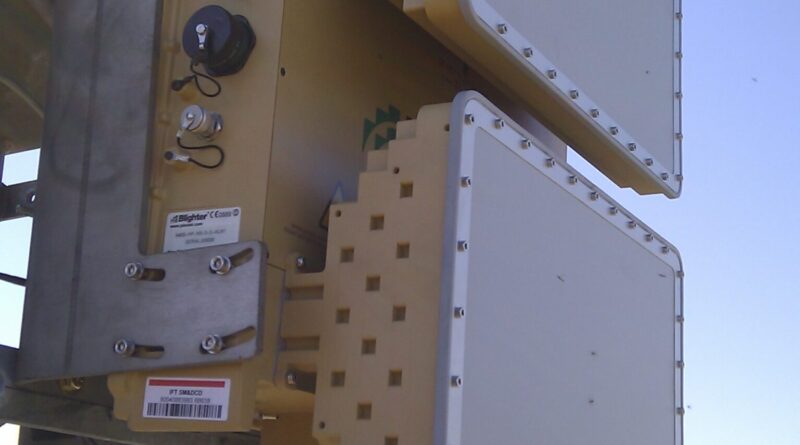Blighter’s New Long-Range Border Surveillance Radar Detects a Person at 15km with just 4 Watts of Power.
Blighter, a pioneering designer and manufacturer of electronic-scanning ground movement radars, has unveiled its longest-range innovative border surveillance radar system, which can detect a person 15km or 9.3 miles away with just 4 Watts of power – that’s the same as what is needed to power a mobile phone or a modern LED light bulb.
According to Blighter, this extended range means earlier interception of intruders and significant cost savings for border security operators. With its ‘person at 15km’ detection range, the Blighter B422LR (long-range) border surveillance system can now monitor an area of 707km² compared with 201km² for a radar with a ‘person at 8km’ range.
Blighter’s export-friendly B422LR border surveillance system provides up to 360 degrees of pure electronic scanning coverage with no mechanical rotation using static, low-power, solid-state transmitters. This low-power, low-bandwidth system can be operated using solar panels and does not require additional forced air cooling, making it ideal for remote operation along national borders.
Mark Radford, co-founder and chief technology officer (CTO) at Blighter, says, “This new ultra-reliable long-range e-scan radar enhances our leadership position in the global border surveillance market. Our radar’s ability to detect a person 15km away or a crawler 6.4km away, in all weather conditions and complex terrains, and with just 4 Watts of transmission power makes the case for adopting our solution even more compelling.
“As our recent record order book shows, governments and border forces are increasingly adopting our e-scan radars as the primary detection sensors for their long-range remote surveillance systems. With the extended range, customers will not only be able to detect and intercept targets earlier, but with a larger area covered by each radar system, the number of radars, towers, and the supporting infrastructure needed will be reduced.”
Blighter’s B422LR border surveillance radar system uses frequency-modulated continuous wave (FMCW) transmission technology combined with sensitive micro-Doppler target detection. This means the radar has a small communications bandwidth requirement and, therefore, needs only a fraction of the transmitter power used by traditional security radar systems and dramatically less than classic radar systems.
“Our radar’s low size, weight, and power (SWaP) profile coupled with the extended range is a huge benefit to border authorities,” adds Mark Radford. “But it is also vital that the radars are easy to integrate with our customers’ command and control (C2) systems. We achieve this using our BlighterNexus AI-assisted Hub.”
Blighter’s B422LR works with Blighter Nexus to facilitate the integration of remote radars with command and control (C2) systems, providing border authorities with a common operating picture (COP) – a real-time, unified view of the border environment. BlighterNexus also optimizes target detection capabilities while reducing training and operational costs as the AI-assisted software automates the setup, configuration, and adjustment of multiple radars to deliver optimum performance even in changing weather conditions.
Blighter’s radar products are export-friendly and not subject to U.S. International Traffic in Arms Regulations (ITAR), nor are they governed by the European Union’s dual-use export control regulations. Mark Radford says, “Our ITAR-free status and the licensing of our products for commercial and military applications give us a strategic advantage in the global border security market, making us easy to do business with while considerably reducing the licensing requirements for our customers when buying and deploying our technology.”

